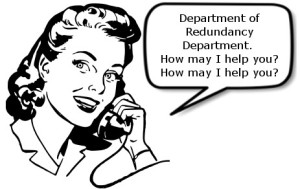 I think we’ve all had days in this writing business when it seems easier to just throw in the towel. The words aren’t coming, or the story’s not hanging together, or the sales aren’t happening, and you wonder whether it’s worth all the time and effort you put into it.
I think we’ve all had days in this writing business when it seems easier to just throw in the towel. The words aren’t coming, or the story’s not hanging together, or the sales aren’t happening, and you wonder whether it’s worth all the time and effort you put into it.
If you’re very, very lucky, you have a cheering section to keep you going. For some of us, it’s our fans; for others, it’s family members or friends. A kind or encouraging word from one of them is often enough to keep us plugging away.
But what if you don’t have a cheering section? Then what do you do? Continue reading “Coping with Unsupportive Support”

 Indie publishing is full of learning experiences. One of them involves what to put on the copyright page of your book. (The copyright page, to be clear, is the page on the flip side, or verso, of the title page at the very beginning of your book.)
Indie publishing is full of learning experiences. One of them involves what to put on the copyright page of your book. (The copyright page, to be clear, is the page on the flip side, or verso, of the title page at the very beginning of your book.) Back in the good old days, before Amazon started tweaking their sales algorithms, an indie author would have been crazy not to enroll a book in KDP Select. You could put your book free for a few days, give away thousands of copies, and get a lovely bounce in paid sales when the promotion was over. Some indies made their careers from that bounce.
Back in the good old days, before Amazon started tweaking their sales algorithms, an indie author would have been crazy not to enroll a book in KDP Select. You could put your book free for a few days, give away thousands of copies, and get a lovely bounce in paid sales when the promotion was over. Some indies made their careers from that bounce. Your main character has fled from the office she shares with a close co-worker and friend, and has run to the boss’s office. There, in a key scene, she has emoted all over herself, revealing a deep, dark personal secret thereby. (Yes, she still has a job at the end of the scene.) Now she’s back in her own office. Her friend gets in her face and says, “For the love of Pete, would you please tell me what this is all about?”
Your main character has fled from the office she shares with a close co-worker and friend, and has run to the boss’s office. There, in a key scene, she has emoted all over herself, revealing a deep, dark personal secret thereby. (Yes, she still has a job at the end of the scene.) Now she’s back in her own office. Her friend gets in her face and says, “For the love of Pete, would you please tell me what this is all about?”